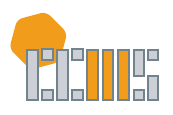Abstract / Synopsis
Boundary systems take many forms: personal, historical, mathematical, and in the case of an elderly Jesuit and a young mathematician, a struggle to identify the larger boundary that both connects them and provides their separate identities. Their ragged conversation is couched in a pastiche of historical, popular, and personal notions of mathematics; however their language is simultaneously natural and mathematical so that it points to the irremediable gaps that the multitude of our languages attempt to "solve." Father McMann pages through his list of such incommensurables: female/male, young/old, parabola/limit, rational/surd and “all the other 88 asynchronies that plagued his dreams like a badly tuned piano.” Like the gap between Adam’s outstretched finger and the finger of the creator on the ceiling of the Sistine Chapel, these “gaps” are what motivate us, perplex us, and which lead to very strange arguments about the re-presentational nature of any language — mathematical or natural — between literary scholars and their mathematical friends.
DOI
10.5642/jhummath.201602.21
Recommended Citation
Hugh C. Culik, "Our Lady, Queen of Undecidable Propositions," Journal of Humanistic Mathematics, Volume 6 Issue 2 (July 2016), pages 230-240. DOI: 10.5642/jhummath.201602.21. Available at: https://scholarship.claremont.edu/jhm/vol6/iss2/21
